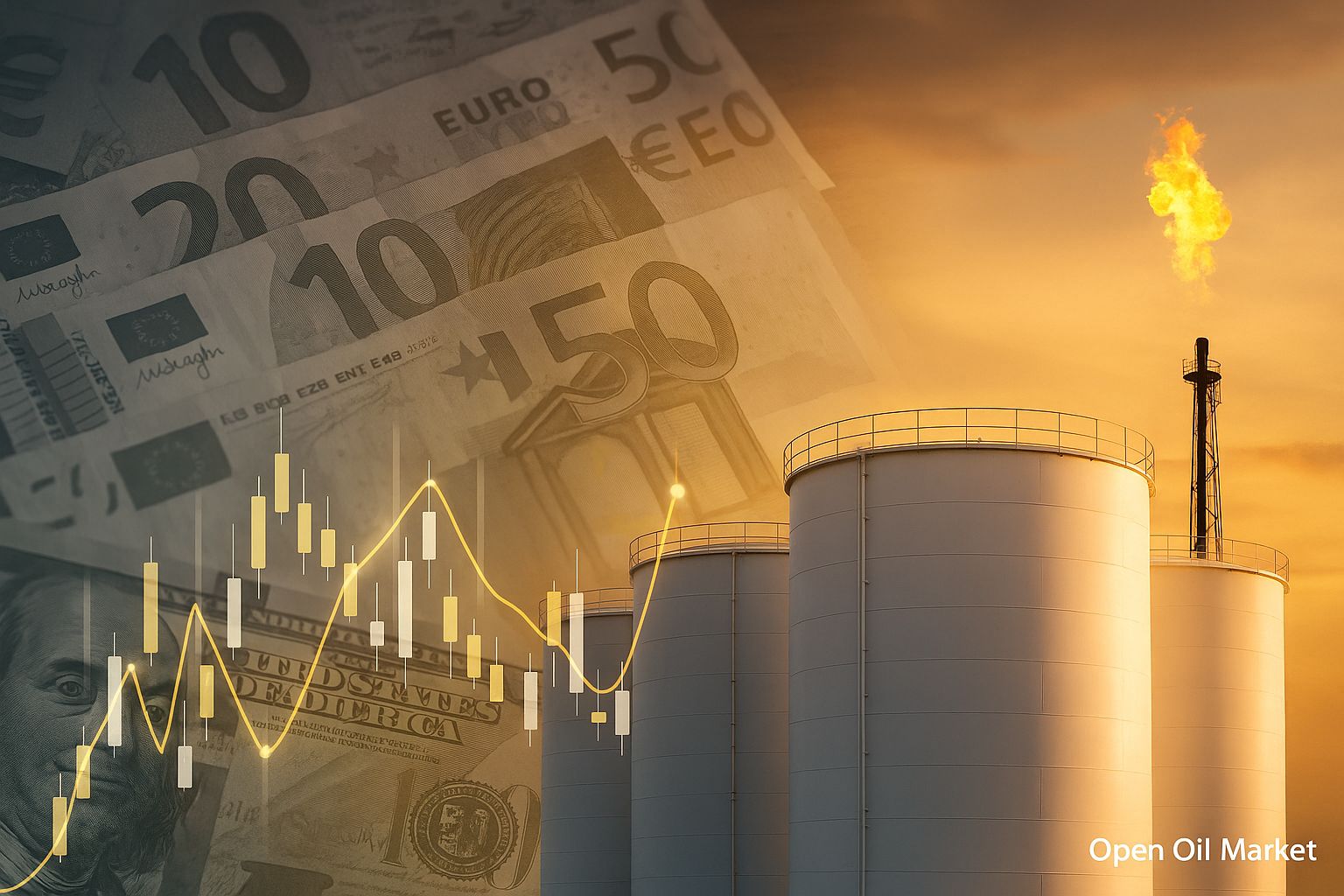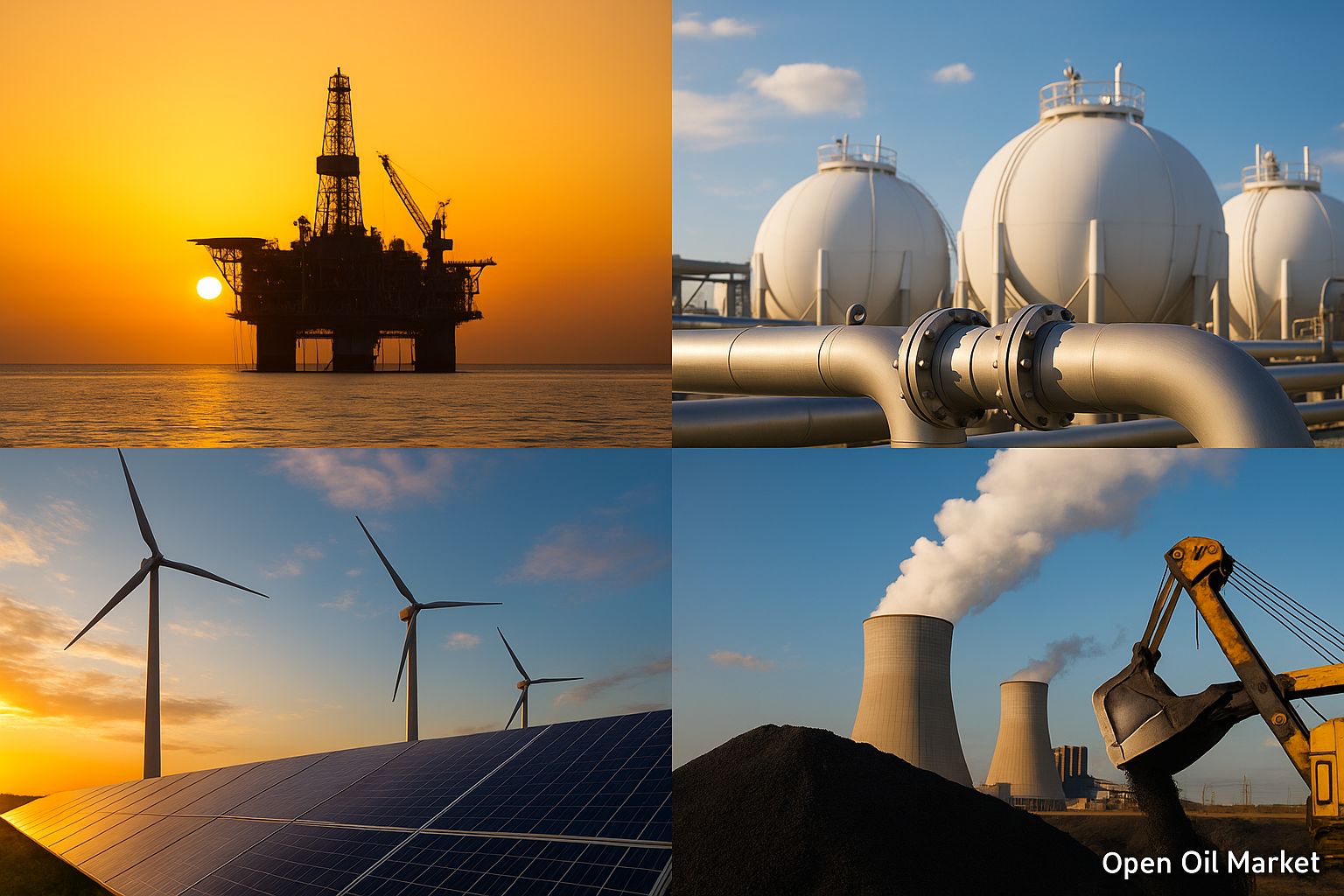
Main News on the Fuel and Energy Complex as of November 1, 2025: The US-China Trade Truce Inspires Optimism in the Oil Market, Europe Enters Winter with Record Gas Reserves, and Sanction Pressures on the Russian Fuel and Energy Sector Continue to Escalate.
Current events in the fuel and energy complex (FEC) as of November 1, 2025, unfold against a backdrop of sustained geopolitical tension, yet cautiously positive signals are emerging in the markets. The sanctions standoff between Russia and the West remains unabated: the US introduced new restrictions this week against the largest oil and gas companies in Russia, while the European Union is closing remaining loopholes around the embargo (having approved the 19th sanctions package with a phased ban on purchasing Russian LNG). Nevertheless, the global economy received a boost of optimism—on October 30, US and Chinese leaders agreed to a trade truce, averting a new round of tariff wars. The prospect of a de-escalation in relations between the two largest economies has improved forecasts for global demand for energy resources and bolstered sentiment in commodity markets.
At the same time, commodity markets are exhibiting relative stability. Oil prices, which had dropped to multi-month lows earlier in the fall, are holding within a moderate range: Brent is around $64–66 per barrel, while WTI is approximately $60–62. Recent sanctions news has caused brief surges in prices (Brent briefly exceeded $66), but overall, the balance of supply and demand remains fragile, leaning toward surplus. The European gas market is confidently entering winter with record fuel reserves: underground gas storage in the EU is over 95% full, providing a safety margin ahead of the heating season and pushing exchange prices down to a comfortable ~€30 per MWh (well below the peaks of 2022).
The global energy transition is gaining momentum—many countries are reporting new records in generation from renewable sources, although traditional resources are still needed to ensure the reliability of energy systems. In Russia, following the recent fuel crisis, government emergency measures have stabilized the situation: gasoline and diesel production has recovered, wholesale prices have decreased, and gas stations are well-stocked.
Below is an overview of key news and trends in the oil, gas, coal, renewable segments, and the fuel market as of the current date.
Oil Market: Surplus Balance and Risks Amid Trade Truce
Global oil prices remain under pressure from fundamental factors, despite short-term spikes. After falling to multi-month lows in the fall, Brent prices have stabilized in the range of ~$60–65 per barrel—below levels seen at the start of the year. The market expects that by the end of 2025, oil supply will exceed demand, driven by several trends:
- Production Increase Amid Slowing Demand. OPEC+ continues to gradually increase production: in October, quotas were raised by approximately 0.14 million barrels per day, with a similar move expected in November. At the same time, major producers outside the cartel (the US, Brazil, etc.) have reached record output levels. Concurrently, global consumption growth is slowing: the IEA forecasts an increase in demand in 2025 of just ~0.7 million barrels per day (over +2 million in 2023). Moderate economic growth, the effects of past price peaks, and the spread of electric vehicles are limiting fuel consumption increases.
- Geopolitical and Sanction Risks. The intensification of sanctions against Russia is holding back some of its exports—recent US measures concerning Russian oil companies prompted a surge in Brent prices above $66, demonstrating the impact of political factors. Meanwhile, the absence of progress in dialogue between Russia and the US keeps uncertainty alive. On the other hand, the truce between the US and China has improved market sentiment, bolstering hopes for stable demand. As a result, oil prices remain in a narrow range without a clear trend towards growth or decline.
The oversupply is preventing oil prices from rising significantly. Market participants are acting cautiously, aligning with the surplus, and only serious shocks are likely to return high volatility to prices.
Gas Market: Record European Reserves and Flexible Supplies
The situation in the gas market is favorable for consumers, especially in Europe. The continent is approaching winter with unprecedented gas reserves: EU underground gas storage is over 95% full. A mild autumn and high imports of liquefied natural gas (LNG) have allowed for such reserves to be accumulated without emergencies, stabilizing wholesale prices at a low level. TTF futures are hovering around €30 per MWh—far below the peaks of 2022.
The risk of a repeat of last year's price crisis has significantly decreased, although much depends on the severity of the winter and the availability of LNG. Russia is compensating for its loss of the European market by shifting to the east: supplies through the "Power of Siberia" to China have reached record volumes, and preparations are underway for the construction of "Power of Siberia 2," with increased shipments of Russian LNG to Asia.
Overall, the global gas sector is welcoming the start of winter with solid buffer stocks. Record reserves in Europe and the flexibility of global LNG supplies allow for expectations of stable prices in the coming months. Unless extreme cold or other unforeseen circumstances occur, the market is expected to remain balanced and comfortable for consumers. Nonetheless, players continue to monitor weather conditions and Asian demand for LNG, recognizing that circumstances can change.
Geopolitics: Intensification of Sanctions and Asia's Position
October brought a new wave of pressure on the Russian FEC in the absence of progress in dialogue between Moscow and the West. The US has expanded sanctions against leading Russian oil and gas companies, as well as energy carriers, and the EU has approved its 19th package (with a phased ban on Russian LNG) and is pushing for a complete rejection of gas from Russia by 2026. In response, Russia is strengthening its collaboration with the East and pledges to redirect exports to friendly countries.
India and China, the largest importers, continue to purchase Russian oil and gas at significant discounts, remaining key markets for Russia. Despite pressure from the West to cut dependence on Moscow, these countries are unwilling to sacrifice their energy security. At the same time, they are ramping up domestic production and infrastructure (LNG terminals, storage) for the future. The US is attempting to attract Asian giants: as part of the trade truce, China has agreed to increase imports of American energy products. However, at this point, India and China maintain close ties with Russia, remaining critically important buyers of its energy resources.
Energy Transition: Renewable Records Amid Traditional Energy's Role
The transition to clean energy is gaining momentum. In 2025, record capacities of solar and wind power plants are being introduced, and the share of renewables in global electricity generation has surpassed coal for the first time. Investments in "green" energy have reached historic highs with support from government programs. Nevertheless, oil, gas, and coal still form the foundation of energy supply—especially for industry and transport. The stability of the energy system is still ensured by traditional gas and coal plants, which compensate for the variability of solar and wind. Governments and companies are increasing investments in energy storage and hydrogen technologies, but achieving carbon neutrality remains a task for the coming decades and will require infrastructure modernization.
Coal Market: Demand in Asia and the Decline of Coal in the West
The coal market reveals opposing trends. In Asia, demand remains high: extreme heat in the summer caused a spike in coal generation and price increases (coal prices in Australia surged to multi-month highs). Exporters have increased shipments, stabilizing prices in the fall. Simultaneously, developed countries are accelerating their exit from coal: the share of coal generation in the EU has dropped below 10%, with some states planning to close coal-fired power plants in the current decade. In the US, cheap gas and a surge in renewables are displacing coal from the energy mix. As a result, global coal prices are significantly lower than the previous year's levels, reflecting weakened demand outside of Asia.
Russian Fuel Market: Stabilization and Strict Control
After the summer fuel crisis, Russian authorities took stringent measures to normalize the internal market. The ban on gasoline exports has been extended (until the end of 2025), and the export of diesel is strictly limited. Oil refineries are being compensated for redirecting fuel to the domestic market, and prices at gas stations are under enhanced control (without direct freezing). These measures allowed for the recovery of gasoline and diesel production and supplies to normal levels by the end of October. The government hopes to get through the winter without disruptions and is ready to quickly reinstate export restrictions in case of a potential shortage. However, for long-term stability, investments in fuel storage and delivery infrastructure, as well as modernization of refining, are necessary—emergency measures alone will not resolve the issue.
Forecasts and Prospects: Cautious Optimism Ahead of Winter
By the end of 2025, the energy sector will have adapted to the new realities. The sanctions standoff has radically changed supply routes: Europe has largely abandoned Russian gas and sharply reduced oil imports, while Russia has redirected exports to the east, strengthening ties with Asia. At the same time, fundamental factors are favorable for consumers: oil and gas supply meets demand (storage is full, production is high, and consumption growth has slowed), resulting in prices stabilizing at moderate levels—far below the peaks of previous years.
A cautiously optimistic forecast for winter anticipates the absence of significant disruptions. If there are no extreme cold spells or new crises, the oil market will maintain a surplus and low prices, while record gas reserves will prevent gas prices from sharply rising even with increased consumption. For investors and companies in the sector, this situation indicates more predictable operating conditions, although current business profitability is lower than during the commodity boom. Nevertheless, risks remain: escalating conflicts, new sanctions, or technological accidents could disrupt the balance. Furthermore, the accelerated energy transition will gradually reduce demand for fossil fuels, necessitating that FEC companies prepare for structural changes.




